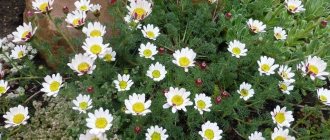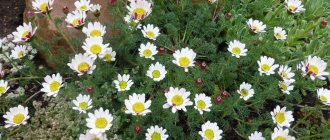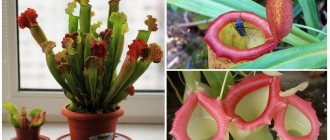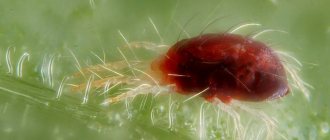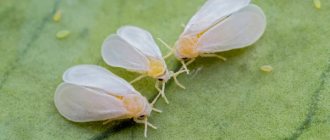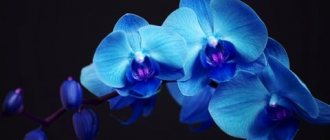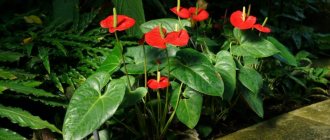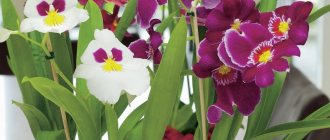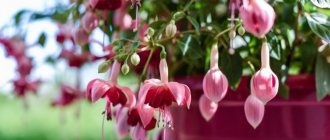The birthplace of the pineapple plant, photos of its flowers and fruits
Pineapple is a genus of perennial evergreen herbs of the bromeliad family.
The genus name comes from a transformed local South American name for this plant. In the Guarani language it means "exquisite taste." It unites 8 species, common in Paraguay, Brazil, Colombia, Venezuela, and also widely cultivated in tropical and subtropical regions of both hemispheres. There are 5 species common in Central and South America. In Europe, the cultivated pineapple plant became famous thanks to Christopher Columbus. Brazil is considered to be the birthplace of the pineapple plant. There this perennial herbaceous plant still grows wild. But a navigator in Central America on the island of Guadeloupe met this wonderful fruit during his journey in 1493. Pineapple was cultivated by the inhabitants of this island; Columbus was fascinated by the fruits, which looked like both pine cones and apples. The name "pineaple", literally meaning "apple cone", is still preserved in the English language.
They began to be grown en masse in tropical countries in the 16th century. In Europe, from the middle of the 17th century, it began to appear in botanical gardens, greenhouses, and greenhouses.
At first, the exotic plant was treated with suspicion and distrust in Russia. At first, the fruits were even chopped and fermented in tubs like cabbage, and then they were used to cook sour cabbage soup and borscht. Later they began to be added to meat dishes.
Currently grown in many countries, including in greenhouses. Unlike most plants of the bromeliad family, it grows in nature in the ground, receiving both water and nutrients from the ground. As you can see in the photo, pineapple flowers are small, with large reddish bracts:
After flowering ends, they turn into a red or pink fruit.
Description of plants similar to pineapple with photographs
Rosette tropical plants look quite original in appearance and attract gardeners.
Eucomis
This is a Greek name that means “beautiful-haired.” Eucomis is a plant of the asparagus family. It is a bulbous perennial flower with long leaves in a single rosette. With the beginning of summer, a meter-long arrow consisting of small flowers similar to stars grows in the center of the eucomis. Flower petals can be cream, green, purple, white. There are inflorescences with multi-colored colors.
Eucomis can grow in open ground and at home. This flower has good hardiness. The planted bulb sprouts in May, and after a month and a half a flower stalk appears, which lasts until the first cold weather.
The plant feels good in the heat of the day if it is provided with high-quality watering.
Interesting! On hot days it may seem that the eucomis has wilted, but in fact this is how the plant reacts to high temperatures and in the evening the leaves will become elastic.
Caring for eucomis is simple; it is enough to provide it with watering during the period of flowering and growth; after the inflorescence withers, add water much less frequently. As soon as the leaves turn yellow, there is no need to water the plant at all - it enters a dormant period.
Bilbergia
This bromeliad flower may differ in appearance, depending on the variety.
Billbergia penetrating forms beautifully shaped curved inflorescences.
Billbergia pyramidalis has a funnel-shaped rosette, assembled from wide leaf plates, among which a straight inflorescence grows.
Billbergia blooms all winter; with the beginning of spring it dies, but small rosettes form on the sides that can be replanted.
Vriesia
The most common variety of bromeliad plants that are grown at home. Its natural habitat is the tropical forests of America, Brazil and Argentina.
The leaves, like all varieties, are collected in a rosette, each width is from 4 to 8 cm, length - 20-70 cm. They have a slightly curved shape and a smooth surface, sometimes with spots.
During the flowering period, a spike-shaped peduncle 1 meter high is formed in the center. The decorative appearance of the plant is given by the bracts of red and yellow flowers; they can stay on the vriesia for a couple of months.
Bromeliad
This plant is very difficult to grow in an apartment because it needs certain conditions. Bromeliads are formed from green leaves with thorns along the edges. During flowering, the leaves on top of the rosette become red; the inflorescence grows the same color, on which white or purple flowers are formed.
Interesting! If it is possible to create a temperature of +15 degrees indoors in winter, bromeliads can be grown at home .
In the warm season, the flower feels good in open ground, with abundant watering and fertilizing, which is added to the rosette funnel.
Guzmania
The plant received this name thanks to the traveler Anastasio Guzman.
Guzmania consists of glossy leaves collected in one rosette. With the onset of the 4th year of life, a spike-shaped stem grows in the center of the flower. The inflorescence is bright in color and consists of bracts with small flowers. The flowers stay on the boom for a couple of days, and the bracts remain for 3-4 months.
Neoregelia
This plant's rosette consists of belt-shaped leaves with a shiny surface. The edges can be decorated with spines, or they can be smooth, the end of the leaf is rounded.
The neoregelia rosette remains with a red center throughout the flowering period. The plant blooms with small blue and white flowers, but thanks to the red color of the rosette, the variety looks like a large flower.
Ekhmeya
This is the first representative of the bromeliads to appear in the botanical garden; later they began to grow it at home. The exotic plant consists of wide leaves that form a rosette with a large funnel. Each leaf is covered with scales that look like a pattern. During the flowering period, echmea looks even more beautiful. Inflorescences of bright pink light appear from the center of the rosette. The most unpretentious bromeliad plant, which calmly tolerates dry air and does not need to create a certain temperature regime. Care consists of watering at the roots or in a funnel.
Nidularium
The rosette is assembled from leaves with teeth along the edges. They are dark green in color with light stripes along the plasticine.
Nidularium blooms with white, inconspicuous flowers. All the decorativeness is created by the bracts and reddish leaves in the center.
Interesting! Some varieties of nidularium can be tricolor, namely white and green with bright pink edges.
Tillandsia
Perennial herbaceous plant of the bromeliad family. Tillandsia has many varieties, but a variety with dark green leaves and an inflorescence 35 cm high can be grown at home.
The peduncle of tillandsia is formed only in the fifth year of life; the bracts are bright pink in color and shaped like a paddle.
When the peduncle fades, the rosette begins to die and lateral shoots appear for reproduction.
Protea
A rather unusual plant, native to Australia and Africa. Externally, protea may resemble an artichoke or burdock. The artichoke king protea looks like a pineapple during the period when the bud is formed. When the inflorescence opens, it resembles a large artichoke, pink or red in color.
One protea flower can be 30 cm in diameter, 1 bush contains up to 10 buds.
The most expensive pineapple
In Britain, a breeder was able to grow a pineapple whose cost was several times higher than the standard price for the fruit of this plant - 10,000 pounds sterling.
Such a high cost of pineapple was not so much due to the taste of the fruit, but because of the money spent and effort during cultivation. The pineapple grew in a special greenhouse with a 40-foot-long trench. The plant was fertilized with plenty of manure and urine. The result was a very sweet and fairly large pineapple. But the breeders did not dare to sell the fruit, but froze it for the future generation.
Pineapple is an amazing exotic fruit, rich in vitamins and microelements. Eat it with pleasure and feel free to include it in your menu when losing weight, so that your body does not suffer from a lack of nutrients during the diet. Be sure to watch this useful video on how to choose the right ripe, delicious pineapple and cut it correctly.
Diseases, pests and problems in growing pseudoanas
This is one of the most resilient indoor bromeliads. The only threats to pseudopines are rot when the above-ground parts are overwatered or wet, and spider mites in an extremely neglected state.
A plant affected by rot can be saved only by emergency replanting with division. But spider mites can be easily dealt with by correcting care combined with spraying with insecticidal preparations. It is also common for this plant to dry out the tips of its leaves as a result of keeping it in heat or very dry air.
Exotic "relatives"
African chamomile or osteospermum is a rare flower in our country. Another known name is Cape daisy. The petals are not only white, but also blue, purple, lilac, red, yellow, and orange. The basket dimensions are 3–8 cm. Interesting hybrids with unusual petal shapes, for example, resembling a spoon (spoon osteospermum), have been bred. Most similar to chamomile:
16 excellent varieties of plums for the Moscow region
- Barberiae;
- Eklona;
- The osteospermum is noticeable.
The bushes bloom profusely and branch. The plant does not lose its attractiveness even in rainy weather. To make friends with African chamomile, it is enough to prepare a sunny area with well-drained, not too fertile soil. The plant is thermophilic; at -10 °C in open ground it will die. For the winter they are transplanted and kept in cool rooms (+5...+10 °C).
Gazania (gatsaniya) is another African “guest”. A low-growing plant (30 cm) with petals of red, orange, pink or yellow. The leaves are textured, dark green or with a grayish coating. Grown as an annual and perennial. With the right agricultural technology and in favorable conditions, gatsaniya blooms all summer. The plant practically does not get sick, but can be affected by insects: mites and aphids. For the winter, the bushes are dug up and kept in a well-lit, cool place. Rarely watered.
Ursinia is native to South Africa. Of the cultivated species, not all are suitable for the climate of the Middle Zone; Ursinia dill is most adapted to it. The plant is not left to overwinter; it is grown as an annual. Popular varieties:
For abundant flowering, Ursinia requires 5 hours of sunlight.
Garden types of pineapple lilies and their photos
Among all the known types of pineapple lilies, garden ornamental crops are very popular. They are easy to grow in your own area, knowing that eucomis is a heat-loving plant and the severe frosts characteristic of some regions can destroy them during hibernation. But let’s talk about the nuances of caring for and planting a plant in open ground a little later, but for now we’ll learn about garden species of pineapple lily and look at its photos.
The most common in the southern regions is eucomis bicolor. This is a tall plant up to 60 cm with an elastic peduncle strewn with small star-shaped buds. The roots form powerful leaves and elastic shoots up to 50 cm in height. The flowers are collected in spectacular racemose inflorescences up to 30-35 cm long. At the top there is a cap of contrasting green bracts. A distinctive feature of the Bicolor species is that its flowers have a purple border. The bicolor pineapple lily blooms in midsummer. When growing this species in open ground, you should be aware that the minimum temperature for keeping it is +10 degrees. If the mercury level drops to this value, then it’s time to put the Bicolor bulbs away for the winter in a cool room.
The Eucomis species Comosa (crested) is also a fairly popular garden crop in some parts of Russia. The southern part of America is considered to be its homeland, so growing the plant is possible only in regions with a warm climate. The height of this species of pineapple lily reaches 80-100 cm. On a powerful peduncle-arrow there are many star-shaped flowers of pale green color. Flowering can be observed at the end of summer, it lasts until the first cold weather (temperature drops below +10 degrees). The photo below shows one of the brightest representatives of the entire species of crested eucomis.
In the subtropical climate of South Africa, you can find another decorative species of eucomis - pallidiflora. In our country it is often used as a decoration for the garden. In America, this species is recognized as one of the best and is included in the list of the most beautiful garden crops. The pineapple lily has an average height of 45-70 cm, but this does not prevent it from being very impressive during the growing season. The plant blooms with pale green buds collected in dense inflorescences. This species is more visually reminiscent of a pineapple than others, see this in the photo below.
Very popular in our country is autumn eucomis or, scientifically, eucomis autumnails. This plant is of dwarf size, reaching a maximum height of 30 cm. During the flowering period, the perennial produces a peduncle with inflorescences very similar to candles. It differs from other species in the relatively large size of the bulb - on average 8-11 cm. The inflorescence is very dense, one can contain from 120 flowers of pale yellow color with a green tint. The flowering period lasts from mid to late summer, less often until September. This is an excellent species for growing outdoors in regions with little frost in winter.
What are the names of flowers similar to daisies?
Chamomile has many varieties, both cultivated and growing in the wild. In addition, there are a number of plants that are not its subspecies, however, they have a great external similarity with it. These crops also bloom in the summer, making them easy to confuse. Moreover, these plants have the same white petals and yellow centers.
To the uninitiated person, the name of flowers similar to chamomile may not be known. However, in the scientific community there are a number of names for such plants. Experts include anacillus, cornflower, calendula, helichrysum, daisies, pyrethrum and others. It is noteworthy that chamomile and calendula are often classified as the same genus, but this is far from true.
In addition to those that are similar in color, there are a number of plants that have an identical shape, but different colors. Often, unknowing people call them multi-colored daisies.
Where do pineapples grow?
The Mato Grosse plateau, located between Paraguay and Brazil, is considered the birthplace of these delicious fruits. It was from this place that three hundred years ago the plant began to spread throughout warm tropical territories. Breeders have developed many varieties with different flavor nuances. In which countries do pineapples grow? Sweet fruit plantations are located in India, Thailand, USA, China, Vietnam, Mexico, Zaire, the Philippines, Taiwan, and the Azores.
But that's not all. Pineapples can be grown in greenhouses in any area with sufficient sunny days. It is well known that in the 18th-19th centuries they were grown and the fruits were obtained in the greenhouses of some noble estates in Russia. But the most delicious and juicy fruits come from plantations where pineapples grow. The countries where the main supplies come from are located in the Hawaiian Islands, the Philippines, as well as Costa Rica and Brazil. They are grown using a specially developed technology and have large fruits.
Quartblog Digest
Buying indoor plants: step-by-step instructions. — We buy indoor plants that will grow and delight us for many years. The quartblog will tell you how to make the right choice!
Climbing indoor plants: everything you need to know about care - In this article we will talk about climbing indoor plants, their types and names, show photos and give some useful tips for care
Plants for interior decoration - What plants will decorate the interior and require a minimum of care? We have prepared some simple tips for choosing and placing indoor plants in the interior.
When and how to fertilize plants? Part 1 - When to feed plants, what feedings and at what time will bring the greatest benefit to indoor and garden plants.
How to repot indoor plants - repotting indoor plants. We'll tell you and show you how to do it correctly and usefully for our green friends!
houseplants
Features of growth
Pineapple is a perennial plant. In the first months after planting, it actively increases its green mass, forming a large “rosette” of leaves. Its trunk grows tall and thickens, and its leaves thicken. Despite the apparent toughness, the leaves of the plant are very juicy inside. This is due to the fact that in the places where the plant grows there is often a lack of moisture. This explains the peculiarity of the structure of the leaf plates - they look like grooves along which rainwater flows to the stem and roots of the bush. The leaves retain moisture to nourish the plant and help it survive dry periods.
Under what conditions does it grow?
Growing exotic fruits is possible only in the tropics, since pineapples grow in a climate with a constant temperature of 25 degrees. It can survive without water for a long time, but without heat and sunlight it will quickly wither and die. Therefore, growing pineapple requires a special climate.
If cultivation is carried out in greenhouse conditions, it is extremely important to ensure constant high temperature and diffused light in the greenhouse
In which countries does it grow?
Pineapple grows in the tropics, and can be found in all tropical countries of the globe. In terms of scale of cultivation, pineapple ranks third among all tropical fruits. No country with suitable climatic conditions would want to miss the opportunity to make money from growing such a sought-after product. The largest producers of pineapples are Brazil, Thailand, Taiwan, the Philippines, India, and Costa Rica.
Fruit
How do pineapples (fruits) grow? After the end of the flowering period, a very powerful infructescence is formed on the bush of the plant. From it the fruit develops in the future. Moreover, at the top of each fruit a tuft or palm appears, in the same shape as the bush itself, but smaller in size. To grow a new fruit, this top is cut off and planted. However, pineapples are not always self-pollinating. There are subspecies that have only male or only female flowers. In this case, the plant is pollinated by bees and other insects, and seeds are formed in the fruits.
Wild fruits are usually small in size, and almost all of them have many seeds, which various animals like to feast on.
After the first fruit ripens, the lateral shoots that form from the axils of the leaves begin to grow intensively. These shoots are subsequently used to propagate pineapples in cultivated form. When the side shoots are removed, the mother plant blooms again after some time and produces fruit again. The plants are completely torn out after the second harvest, and new ones are planted in their place.
Growing gerberas
Nowadays gerberas are grown mainly as hybrids. They are successfully cultivated in almost any climatic zone. Due to the spectacular shape of the flowers, this plant is often used in bouquets. Cut gerberas can be stored in water for up to 20 days. To ensure they last a long time, it is recommended to pour only a small amount of water into the vase so that the stem does not have time to rot.
More than 1000 varieties of gerberas are known, each of which differs in the shape of the inflorescence and the color of the petals. There are varieties with pink, white, orange, red, yellow, and black flower colors. Breeders have not yet managed to achieve only one color of gerbera petals - blue. Some gerberas may have petals of different colors on one flower.
Gerbera prefers to grow in a sunny place. It needs to be watered so that water does not get into the rosette of leaves - otherwise the plant will rot and die.
While tall gerberas are good in a flower bed, they prefer to grow dwarf varieties of this plant indoors. For a gerbera to bloom, it needs short daylight hours and good ventilation.
The not-so-inconspicuous relative of ornamental pineapples is the pseudoapple.
Pseudananas are considered a relatively young culture. It was discovered only at the end of the 19th century, and it appeared in greenhouse form and in the botanical gardens of Europe only in the last century. , represented by a single species - Pseudananas sagenarius .
A recent revision of the classifications led to the fact that the plant was nevertheless included in the genus Pineapple as a separate and distinct species among its relatives - Sagenarius pineapple . In the literature, in Western catalogs and in retail sales, pseudoanas are still sold under the old name pseudoanas, and debate about the status of this plant continues.
Despite the name, which directly indicates a similar appearance, pseudoapple is mistakenly perceived as an alternative or copy of regular pineapples. This culture is capable of surprising both with its decorativeness and its purely practical characteristics; it differs quite strongly from its counterpart.
In nature, pseudoanas are found only in South America. They are most widely represented in Bolivia and Brazil, although this plant is also found in the vast forests of Ecuador, Paraguay and Argentina.
Pineapple , or Pseudananas sagenarius , or fodder (Ananas sagenaria, synonym - Pseudananas sagenarius) is a species that is often associated with large-tufted pineapples, but when comparing these two plants, the differences still seem striking.
Despite their family ties, only one feature is truly the same - large, cone-like inflorescences that transform into easily recognizable inflorescences. The Sagenarius pineapple looks much more “wild”; it does not have such a strict pattern of leaves in a rosette, even the best varieties are less compact in size, and the foliage looks sloppy. But it also has better tillering ability. In terms of development cycles, Pseudananas is a typical bromeliad. Its mother rosette dies after flowering.
Pseudananas are large plants and require a lot of space. The main leafy “stem” grows up to 1.5-2 m in length. At the base of the main rosette shoot, shortened, thickened stems constantly appear, bearing daughter rosettes, which completely replace the mother plant after fruiting is completed.
Young pseudoapple rosettes look neat and really look like a tufted pineapple. As adults, they become more and more “wild” in appearance. The plant together with the children gives the impression of exotic thickets.
Pseudananas leaves are impressive in both width and length. Unlike the leaves of the pineapple tufted, the base of the leaves of this pineapple can be up to 7 cm in size. Up to 40 sword-shaped leaves of a bent-vaulted shape with a deeply protruding grooved cut and an unevenly wavy surface are collected in a spreading, sparse, often asymmetrical rosette.
Due to their length of over 1 m, the leaves of pseudoanas seem especially noticeable in adult rosettes. The glossy surface of the leathery leaves is combined with light scales on the underside and hook-shaped brown spines along the edge.
The flowering of pseudoapples is very impressive. Short, up to 30 cm in length, peduncles with a bluish effect from scales on the surface are crowned with a large simple inflorescence-spike with rusty, shortened bracts, tiled lanceolate bracts with a serrated edge and a bright pinkish-red color and sessile flowers up to 5 cm long with asymmetrical orange sepals and straight lanceolate petals with an unusual narrow purple limb and a white marigold.
Flowers and sepals are equal in length, the stamens grow to the petals, which only emphasizes the “purity” of the lines of the inflorescences. Pseudananas cones, up to 17 cm in length, reach 9 cm in width and contain up to 200 flowers. The flowers bloom gradually, one by one, from bottom to top. In contrast to the greenery of the plant, the inflorescences appear symmetrical and surprisingly regular. The bright red inflorescences are super decorative; on the bushes they seem to be an exclusive decoration.
After flowering, edible, juicy, very beautiful pseudoapple fruits are formed. Their sizes often exceed the size of the inflorescence by several centimeters (up to 20 in length by 10 cm in width). Pseudoberries ripen for a very long time, changing color as they ripen to bright scarlet with a pink tint.
Mature rosettes of pseudoanas leaves become more and more “wild” in appearance. © Daderot
Growing at home
You can grow pineapple quite easily at home. To do this, you will need the top of the fruit with leaves, which is cut off or carefully unscrewed. First, the tuft is left to lie in the air, then after a few days it is placed in a container with water, which must be changed every day until the roots appear. Plant the crest with roots in a pot with drainage. Suitable soil is soil or a special mixture for growing orchids, sand and peat.
Pineapples love light very much and you need to keep the pot with the plant on the windowsill, on the south side. In winter, if there is a lack of light, the plant is provided with additional lighting for 8-10 hours using a fluorescent lamp.
Water the pineapple with settled or boiled water at a temperature of 35 degrees. It is useful to spray the leaves 2 times a week if the air in the room is dry.
Conditions for growing indoor pseudoanas
Sagenarius pineapple is the most unpretentious of all pineapples, adapting surprisingly well to living spaces and not requiring any special conditions. A slight decrease in temperature for the winter is the only measure needed for its good flowering. If pseudopineapple overwinters in a warm place, it still retains its decorative greenery and ability to tiller, but may not bloom annually (which is not always a drawback when grown in mixed compositions; it happens that this also happens during cold wintering).
Pseudananas are ideal candidates for creating tropical gardens and the effect of wild exotic thickets in greenhouses and winter gardens. This is a large, massive plant that immediately sets the mood. It is recommended to grow it in rooms where they rely on exotic crops or where it is necessary to create a feeling of thematic landscaping.
This plant will also not be lost in single batches. It adapts better than many other bromeliads to living rooms and is appropriate wherever there is no need to choose particularly neat and symmetrical, “correct” crops and bushes, and is an excellent wild-looking alternative to the strict lines and orderliness of modern stars.
Lighting and placement
Pseudananas prefer sunny places or the most bright, diffused lighting. The window sills of southern, western and southwestern windows are considered ideal for them, but when choosing a location, one has to take into account the difficulties of placing the plant due to its size.
The size of adult pseudoapples, despite the fact that the optimal location remains on the windowsill, rarely allows placing containers directly on it. Pseudananas are placed as close to the windows as possible.
When purchasing pseudoapple, you should take into account the growth and tillering behavior of this bromeliad. Pseudananas must be provided with sufficient space. Large, spreading rosettes, combined with smaller plants growing at the base, require some distance from other plants, and the hard thorns make any contact with the leaves unpleasant.
Temperature and ventilation
Pseudananas feel comfortable at room temperatures. During the period of active growth, any indicators in the range from 20 to 25 degrees are suitable for them. Heat has a detrimental effect on the decorative appearance of leaves, but nothing bad will happen to the plant at higher air temperatures if watering and humidity are adjusted in time.
During the winter, pseudoapples will prefer slight coolness. The temperature needs to be lowered by at least 2-3 degrees - to 15-18 degrees Celsius. This plant does not like the cold; it overwinters well in warm conditions at stable temperatures, but may bloom more rarely or at atypical times.
During winter, pseudoanas prefer slight coolness. © L'herbier en photos
Caring for the exotic Eucomis lily
Undemanding pineapple lilies are loved by gardeners who know some rules for caring for exotic plants. They will be pleased with excellent summer flowering. Over its long history of popularity as a garden crop, Eucomis has established itself as an unpretentious, but very light- and heat-loving plant. Most species do not have frost resistance, so their bulbs need to be dug up every year and stored for the winter. Lily does not tolerate gusts of cold winds and drafts. This impairs flowering, so some gardeners grow it in pots and take it out into the fresh air in the garden or onto the balcony in the summer. In the southern regions, lilies overwinter in open ground, under spruce branches or sawdust.
After planting, minimal watering should be observed. When a rosette of leaves appears, it is gradually increased. During the period of active flowering, abundant watering is needed; in hot weather, the air is also humidified. After flowering, the introduction of moisture is gradually reduced, and by the time all the leaves turn yellow, watering is stopped completely.
For container crops grown at home, an annual transplant into a new pot with a complete replacement of the soil is required. For garden species, the bulbs are removed for winter storage. In the fall, when the leaves turn yellow, they are dug up, then washed, disinfected with a light solution of manganese and put away, packed in paper or rag bags in a cool, dry room. The vegetable compartment in the refrigerator is suitable for storing bulbs in winter. For overwintering a pineapple lily, a simple pot with soil mixture is also suitable - the perennial is stored in it at room temperature, and when it becomes warm and the soil warms up, transplant it into open ground.
Source
Indoor pineapple: photo and care
Of course, you won’t have to enjoy indoor pineapple (Ananas), because it is an ornamental plant, but you will definitely be able to surprise your neighbors by having such a miracle on your windowsill. With proper care for an indoor pineapple, you can get a fairly large fruit, barely distinguishable from a real fruit.
You will learn below how to care for an indoor pineapple and how to propagate this home plant.
Family: Bromeliads, light-loving, moisture-loving.
The crested pineapple (Ananas comosus) is usually grown indoors - a large terrestrial plant with a greatly shortened stem and a rosette of rigid linear sword-shaped leaves (can reach 2 m in diameter and 1 m in height).
The leaves of the indoor pineapple plant are gray-green, grooved, very narrowed towards the apex, completely covered with scales, and lined with sharp spines along the edges.
Flowers with pinkish-purple petals are arranged in a spiral in dense spike-shaped inflorescences and covered with wide cup-shaped bracts.
As you can see in the photo of an indoor pineapple, after flowering ends, a compact golden-yellow fruit, similar to a cone, is formed.
There is also a variegated variety - "Variegatus" with green-cream longitudinal stripes on the leaves that turn pink in bright light.
The bracted pineapple (Ananas bracteatus) looks even more elegant with bright striped green-cream-pink leaves.
Pineapple has powerful positive energy. This is a plant of renewal, spiritual awakening. The presence of pineapple in the house will make life varied and colorful, emotionally rich, and festive.
Caring for a houseplant pineapple at home
Pineapple can be grown on southern and southwestern windows at temperatures not lower than +18 °C in winter. When caring for indoor pineapple, the plant in spring and summer during the period of active growth is watered generously, sprayed and fed once every two weeks. In autumn and winter, watering is reduced, but the earthen ball is not allowed to dry out. Pineapple is transplanted annually in the spring by transferring it into a larger container. A soil mixture consisting of leaf soil, turf soil, and sand (2:1:1) is well suited for planting.
Propagation of indoor pineapple
Indoor pineapple is propagated by seeds or by rooting the apical shoot. To do this, the “sultan” of the ripe fruit is cut off, capturing the “heel” (a piece of pulp 0.5-1 cm thick), dried for 2-3 days and planted in sphagnum with a slight depth. For the formation of roots, warmth, regular moderate moisture and time (3-4 weeks) are necessary, after which the seedling can be transplanted into the soil mixture described above. Reproduction is also possible by separating offspring that form at the base of an adult plant.
Planting pineapple at home
In search of unusual plants, flower growers came to the conclusion that it is possible to plant a pineapple in an apartment.
The easiest way to do this is from the top with the green part. By following certain technologies, you can wait for the pineapple to bloom at home.
Three-year-old rooted parts of the pineapple are covered with polyethylene, and a glass is placed under it, in which 2 grams of calcium carbide are dissolved in water.
After 2-3 months, the pineapple produces a peduncle with red leaves, on which flowers bloom over time; they must be pollinated using a soft brush.
It is less and less possible to surprise guests with classic plants, so in floriculture it has become relevant to adapt unusual flowers from the tropics to home conditions.
https://youtube.com/watch?v=iugssxBhNh8
https://trinixy.ru/80760-kak-i-gde-rastut-ekzoticheskie-frukty-36-foto.html
https://1pocvetam.ru/komnatnye-rasteniya/tropicheskaya-ekzotika-nazvanie-i-opisanie-rastenij-poxozhix-na-ananas.html
Bromeliads. Tillandsia, Guzmania, Frisia, Pineapple, Aechmea, Cryptanthus
Bromeliads are a family of original ornamental plants. They are increasingly decorating our homes and offices. Lovers of indoor flowers are attracted by their exotic shape, spectacular long-lasting flowering, stability and relative ease of growing.
Let us list some plants related to bromeliads. These are tillandsia, billbergia, neoregelia, aechmea, guzmania, and the well-known pineapple. Also freesia (vriesia), catopsis, cryptanthus, nidularium.
The bromeliad family and its genus Bromeliad are named after the Swedish botanist Olaf Bromelius. These are natives of tropical and subtropical regions of America. Over two thousand representatives of this family are distributed from Florida and Mexico to Chile and Argentina. Most of them are epiphytes, settling on tree trunks and branches, as well as on rocks. Some species grow on the ground.
Beautiful leaves tightly covering a short stem are collected in a funnel-shaped rosette. It collects rainwater necessary for the life of the plant during the dry periods of the year. Therefore, bromeliads are called reservoir plants, storage plants.
The rosettes of some species reach one meter in diameter or even more. These peculiar reservoirs are teeming with life, and you can often see there, above the ground... tadpoles! Some tree frogs manage to lay eggs in rosettes filled with warm water.
The leaves of the plants are long, jagged or spiny along the edges, many have a characteristic variegated pattern: wide or narrow, transverse or longitudinal stripes, strokes, spots of various shapes and colors.
In most plants, the flower arrow appears from the center of the rosette (in some species it noticeably droops). Numerous, medium-sized flowers are collected in spikes, racemes or panicles. The flowers of some species are very fragrant. The seeds are small, with flakes, and are distributed by the wind.
Most epiphytic species are grown in loose substrate (a mixture of sphagnum moss and fern roots) or in light structured leaf soil with the addition of rotten soil, fibrous peat, and sphagnum. Terrestrial species are planted in a mixture of leaf soil, peat and sand; for large specimens add turf soil.
All year round, plants are watered moderately; in warm weather, they are regularly sprayed with rain or boiled tap water. It is very useful to add soft water to the outlet, but in autumn and winter, if the plant is kept in a cool room, this should not be done, as the plant may rot.
The root system of bromeliads is poorly developed. But rosette leaves, which collect moisture, also absorb nutrients dissolved in it through special cells, as well as with the help of scales on their surface. Therefore, plants need foliar feeding. During the period of intensive growth in the warm season, it is necessary to spray generously with a weak solution (0.1 - 0.2%) of complete mineral fertilizer 1-2 times a month. You can prepare a solution yourself (0.1%), taking 4 g of ammonium nitrate, 5 g of potassium salt per 10 liters of water.
Bromeliads develop and bloom well in warm and moderately warm rooms, do not require bright sunlight, and many tolerate dry air well. Some types of Billbergia, Neoregelia, and Aechmea feel good in rooms with windows facing north. Billbergia drooping, known in culture for a long time, is considered one of the most unpretentious indoor plants.
For indoor culture, the most suitable are various species and hybrids of the genera Neoregelia , Billbergia , Guzmania (Gutsmania), Frisia (Vriesia) , Catopsis , Cryptanthus , Nidularium .
Various tillandsias with narrow, delicate leaves are more demanding of heat. For successful development and flowering, they also need sufficient air humidity (50-60%), so they should be sprayed more often. Miniature tillandsias with variegated leaves and cryptanthus are especially good.
Very interesting is Tillandsia usneiformes, which in its homeland, Mexico, Central and South America, is called Spanish moss. Its long, hanging shoots with thin leaves seem to be sprinkled with silvery powder. This is an accumulation of a huge number of those very scales with the help of which the plant (it has no roots at all!) obtains moisture from the air. Tillandsia usneiformes is considered the most adaptable species from the group of aerophytes: it often settles down on telegraph wires.
Lovers of indoor plants keep tillandsia in home greenhouses. It grows well there, it does not need any soil or any other substrate. It is enough to hang it on a decorative dry branch or any other protruding object, and it will grow perfectly upside down. In summer, small (1 cm long) yellowish-red or purple flowers are formed at the ends of the shoots, which last for five to six days.
Plants are propagated by young rosettes and seeds. Bromeliads produce side shoots. They are cut off, the sections are sprinkled with crushed charcoal or sulfur and planted in prepared soil.
Faded adult rosettes gradually die off, but young plants form in the leaf axils. They can also be separated and planted in small pots with a loose sandy earthen mixture. After two years (sometimes earlier), young plants bloom.
The apical rosettes that form on the fruits of pineapples , which are sold in stores, also take root easily. Pineapples can be grown at home.
There is a technology that allows you to achieve flowering and fruiting of pineapples indoors. Adult two to three year old specimens are covered with plastic bags. Next to the pineapples, under the same cap, place a glass of water in which one and a half to two grams of calcium carbide are diluted. After two and a half months, flower stalks with short reddish leaves begin to rise on the plants, and then blue-violet flowers bloom within a month. It is advisable to pollinate from using a brush.
It is easy to propagate plants by seeds. Some types of freesia, for example, set seeds themselves, while others, such as blue tillandsia and cryptanthus, must be pollinated artificially, transferring pollen from one flower to the stigma of another with a brush.
Frisia splendidus bears fruit especially abundantly - one of the best ornamental indoor plants. Ripe seeds (the flies need not be separated) are sown in a bowl on crushed, pre-boiled sphagnum or peat, sprayed well with boiled water and covered with glass. For a small number of plants, it is convenient to use jars of processed cheese or sour cream with transparent lids. You just need to drill a few holes in the bottom for water to drain. In these microgreenhouses, seeds germinate at 20-25 degrees in two to three weeks, the first shoots appear even after seven days. As the plants develop, they are planted two or three at a time in small pots with loose soil. In the second year, large specimens are planted one at a time. Three to four years after sowing, freesias bloom, usually in winter and spring. Fiery red inflorescences decorate the room for a long time.
Photo credits: galamish, sergoskylark, fot-natali, tryzhik
Caring for climbing indoor plants
Certain varieties of climbing plants require special conditions and care, so be sure to inquire about such features in advance. But most species are quite unpretentious and practically do not differ in their basic needs.
Temperature
Most vines came to us from the tropics, so they love warm, humid climates and do not tolerate frost well.
It is important that the temperature in winter does not fall below 16 degrees, but also does not rise above 21 in summer. If you turn on the heat or air conditioning, do not do it directly near the flower.
Lighting
Most indoor vines prefer light partial shade because direct sunlight easily causes scorch on the leaves. Periodically turn the flowerpots or flowerpots so that the flower receives even light from all sides. Otherwise, it will stretch to one side and remain deformed.
Watering
Indoor loaches love moisture and spraying: save them from the heat with cool water 1-2 times a day. It is better to water and spray the flower in the morning or evening, but not in the middle of the day under the sun. Water the flowerpot as the soil dries, but do not overdo it, because under the thick foliage the soil retains water for a long time.
Fertilizers and fertilizing
For indoor vines, light, fertile neutral soil or special ready-made mixtures are well suited. The faster a flower grows, the more it needs feeding: this way the leaves will be thick and juicy. Complex mineral fertilizers or organic matter diluted with water are quite suitable.
Trimming
In order for indoor vines to always remain beautiful and tidy, they must be correctly placed on supports and periodically trimmed. For example, in order for the central branch to grow long and strong, it must be gradually braided around a round support and fixed. And in order for the vine to become large and fluffy, new branches are pinched to the apical shoot to form lateral shoots.
Description of the family
An exotic flower with pineapple-like leaves or flowers native to the tropics of America. The family includes several thousand plants with different characteristics. In apartment conditions, compact varieties are mainly grown; their leaves are often rosette-shaped.
Most bromeliads form a rosette of leaves that resembles a vase. In nature, it collects water that the plant feeds on.
In the photos of plants you can see the general characteristics of bromeliad varieties: they have hard, lily-like, belt-shaped leaves. They can be plain or have a spotted and striped pattern.
Bromeliad indoor plants are considered flowering plants, but in fact they are brightly colored inflorescences, and their flowers are small and ugly.
Interesting! Some varieties of bromeliads during flowering can change the color of the leaves in the funnel, so the plant looks like one large flower .
In the natural environment, the flowering of bromeliads coincides with our winter, the dormant period of most plants. The duration of flowering is several months, after which the plant dies and babies form on the side. Young rosettes grow for 3 years, after which they bloom and also leave successors to the family. Developing side rosettes is a method of propagating plants at home.
Despite the fact that the roots of tropical plants are poorly developed, the leaf rosette is able to fully nourish the plant, due to the presence of cells and scales on its surface.
Interesting! Due to the ability of the rosette to retain moisture and nourish the plant, the presence of foliar fertilizers is important for bromeliads. In summer and spring, spraying with a solution of a low concentration of the mineral complex is necessary, twice a month.
How to grow pineapple
If you want to grow pineapple in a pot, you can dilute it in one of several ways:
From seeds
This is a very labor-intensive process, so this method is the least popular. To do this, you will need the seeds of a ripened fruit; they are brown in color with slightly bent tips. They need to be placed in a damp cloth, left for 24 hours, then buried in the soil 1 cm deep and covered with film on top of the pot.
Sprouts
For propagation, shoots without an ovary are used. They are treated with potassium permanganate, dried for about three days, and then planted in moist soil mixed with sand.
Cover the top with film and place it in sunlight; the room temperature should be maintained at 25 degrees. After about 60 days, the first leaves will appear, at which time the film is removed.
From the top
This is the easiest way to grow pineapples. The leaves of the fruit from which the top will be taken should be juicy and rich in color, and the fruit itself should not be too soft, but not hard either. It is better to buy it between August and September. The top needs to be carefully unscrewed from the fruit; if it is unripe, just use a knife and cut it off.
If you follow the basic recommended requirements, the result will not take long to arrive.
Acanthostachys
Acanthostachys is a fairly popular plant, which, indeed, is the closest relative of the pineapple, since together with it it belongs to the same bromeliad family.
The distribution range of representatives of this family is the tropics and subtropics of America and western Africa. But in the wild it is found mainly only in Argentina and Brazil.
Acanthostachys is a herbaceous perennial epiphytic plant that can grow not only in the soil, but also on tree trunks. Its name consists of two Greek words, translated meaning “thorn” and “ear”. Large beautiful flowers, characteristic of most bromeliads, look like spikes, and thorns - small sharp spines - are located along the edges of narrow and long, drooping leaves, collected in a spreading basal rosette. The leaves are dark green, sometimes slightly silvery, can reach one meter in length and no more than 1 cm in width. The height of the plant itself is 30–50 cm.
Acanthostachis blooms for quite a long time - from July to September. The flowers are unscented and grow from the middle of the rosette, but what is usually mistaken for a single large flower is actually an inflorescence. The fruits are also fused and form a large fruit cluster, similar to a pineapple.
Common types of acanthostachis
It is generally accepted to classify a plant as a monotypic genus, that is, consisting of plants of only one species. This is acanthostachis cone-shaped - with bright orange flowers and a cone-shaped fruit. It is this species that is mainly widespread in indoor floriculture.
However, in some sources you can find a description of a plant called - acanthostachis pitcairnioides , the synonym of which is Aechmea pitcairnioides. Aechmea, as you know, is another genus of the bromeliad family, but in appearance the described plant is, indeed, more similar to a typical acanthostachys.
U a. Pitcairnioides is brighter - rich dark green in color with a pink border along the edges and larger spines. And the inflorescences are of an unusual, very delicate, light blue color.
Care and cultivation of acanthostachis
Acanthostachis, like all epiphytes, has a poorly developed root system, which allows it to be grown not only in small pots, but also in small baskets on pieces of wood. Both ordinary potted and hanging plants. It grows quickly, is considered unpretentious and easy to care for, but still has its own preferences that must be adhered to.
You can prepare the soil for growing acanthostachis yourself. It is advisable to add one part of tree bark and any drainage material - sand, expanded clay or small pebbles - to the soil mixture consisting of leaf soil and humus (proportion 4:2). When using pieces of wood as a container, the plant is first carefully removed from the pot and its roots and soil are wrapped in damp sphagnum, and then secured to a support.
It is undemanding to lighting and can grow in the shade and at a considerable distance from the light source. Direct sunlight causes burns on the leaves, so the light should be dim and diffused, such as, for example, on the windowsills of north-facing windows. The room temperature should be moderate. In summer, the optimal temperature range is 20–25 degrees Celsius; in winter, the temperature is reduced by 7–8 degrees lower.
The dormant period in the life of acanthostachis begins after flowering and seed ripening and continues until spring. At this time, fertilizing is usually not carried out, and the frequency of watering is halved. During the active growing season, do not water too much. The soil on the surface should dry out slightly. Constant waterlogging can lead to rotting of the roots, but overdrying is also detrimental.
It is more sensitive to air humidity, so when grown in non-greenhouse conditions it requires frequent spraying. Water, just like when watering, should be used at room temperature. Cold and hard can lead to root disease and leaf drying.
It is recommended to feed Akntostachis from May to September, once every two weeks. It is better to use liquid fertilizers - universal mineral fertilizers or those specifically designed for Bromeliads.
It is advisable to replant annually, in early spring. At the same time, the size of the container is not greatly increased, because it usually begins to bloom only in conditions when the entire earthen ball is closely intertwined with roots.
Reproduction of acanthostachis
Reproduction is possible both by seed and vegetative methods. At the base of the maternal rosette of Acanthostachis pineal, young lateral shoots are usually formed. They are carefully separated with a sharp knife, the sections are sprinkled with crushed charcoal and dried for 8–12 hours. Then the children are planted in a soil mixture made up of peat, leaf humus and sand (1:1:1). Rooting occurs better at high humidity, which can be maintained by regular spraying, and at a temperature of about +20 degrees.
To germinate seeds, more comfortable conditions are needed. Before sowing, they are soaked for several hours in a weak solution of potassium permanganate, then slightly dried. Sow in a substrate consisting of crushed sphagnum and cover with glass. The temperature in the mini-greenhouse should be within 20-22 degrees Celsius. Regular spraying of the substrate and ventilation are also necessary. The emerging seedlings are gradually hardened by opening the glass slightly, and planted in the phase of appearance of 2-3 leaves.
Doronicum
Doronicum is distinguished by the fact that even after cutting it retains its beautiful and bright appearance. Therefore, it is often dried and placed in a vase or painting as a decoration. It grows massively in the mountains, mainly in the Alps, from where it has spread throughout the world. There are several types of it, from the smallest, whose height starts from ten centimeters, to tall and stately ones, about eighty centimeters high. Depending on the species, it can bloom either at the beginning or at the end of summer. The yellow core is framed by bright yellow petals, the leaves have an elongated triangular shape and a strong stem has a rich green color. In some species, the leaves have a light fluff. Thanks to such a bright color of the petals, it is called “sunny daisy”. It is a perennial plant and can grow in one place for more than ten years, but during this time it grows so strongly and densely that it begins to suffer from powdery mildew.
Growing in greenhouses
Pineapple is a heat-loving plant. Although it can remain without water for quite a long time, it will not be able to grow without sunlight. Therefore, it is necessary that the greenhouse premises be warm and with diffused light. This method of growing pineapples is widely used in European countries and southern Russia. The growing technology here is slightly different.
Instead of natural soil, a soil mixture is used, irrigated with slightly acidified water. This leads to rapid growth of the plant. There is a special condition here. Watering should not be done with cold water. It must be at ambient temperature. Under no circumstances should the plant be flooded and the water allowed to stagnate.
Salal
Salal is the name of a very beautiful decorative greenery that perfectly complements color compositions. Salal is very versatile and practical.
Many flowers, such as roses, look exceptionally impressive when framed in salal. Strong and dense salal leaves serve not only as a harmonious frame, giving a bouquet of flowers splendor, but also very well support the buds of the main flowers in the composition. Flower bouquets in which a salal pillow is used instead of packaging look very original, luxurious and stylish. In floral arrangements, salal performs the functions of supporting a bouquet not only in fresh, but also in dried form.
Since salal goes well with almost all flowering plants, florists create a variety of compositions with its participation, from modest and delicate to incredible and creative. If the bouquet consists of flowers of the same shade, the use of salal is optimal to visually “separate” the flowers from each other.
Another important quality of this decorative greenery, beloved by florists, is its vitality, thanks to which floral works with salal remain fresh and colorful for a long time.
rainbow flower
The rhizomatous perennial belongs to the Kasatiaceae family and has almost 800 species, distributed almost throughout the planet. It is difficult to find a person who does not know what an iris looks like - its flower is so unusual that once you see it, you will not forget it. But if there are any, we offer a description of the plant.
Its rhizome is creeping, divided into annual units. A fan of flat sword-shaped leaves sprouts from each segment in the spring. From this bunch comes a thick, durable peduncle, on which 1 to 6 single flowers bloom.
The flower itself is large - 7.5–11 cm high, up to 18 cm in diameter, consists of 6 petals (lobes) - three internal and three external. The inner petals are usually raised upward and form a “crown” or “glass”. The outer lobes, also called fouls, diverge horizontally to the sides or are lowered down.
Both the variegated colors of the petals and the palette of numerous varieties of irises confirm the name of the flower, which is translated from Greek as “rainbow”. There are a variety of tones and combinations:
- plain (self) – white, pastel, rich, almost black;
- combinations with traditional color combinations - white and blue, yellow and brown;
- contrasting combinations of tones and shades, for example, pink and lavender;
- variegated (speckled, edged).
There is no single international classification of the plant - in our country only rhizomatous perennials are called irises; in Europe, bulbous relatives of the flower are also included in the same genus. And the domestic garden classification does not add clarity to the simple amateur gardener. Without going into botanical details, the following types of irises are most often grown in gardens and parks:
- bearded (the most numerous, widespread and sought-after group);
- Siberian;
- Japanese;
- Spuria irises;
- bulbous hybrids (Dutch or English).
Before purchasing collectible irises, carefully read the assortment and resistance of the specimen you like to the climatic conditions of your region. Many of the hybrids bred in the USA, Japan, Holland, Australia are heat-loving and cannot withstand the frosts of the middle zone, not to mention Siberia or the Urals.
